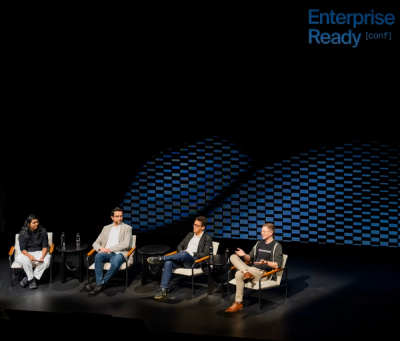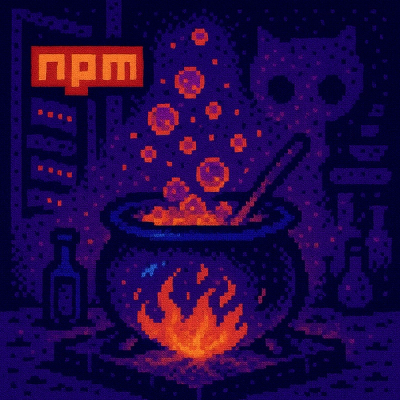
Security News
How Enterprise Security Is Adapting to AI-Accelerated Threats
Socket CTO Ahmad Nassri discusses why supply chain attacks now target developer machines and what AI means for the future of enterprise security.
@aws/lsp-codewhisperer
Advanced tools
To use the CodeWhisperer server behind a proxy, import the CodeWhispererServerTokenProxy as the server and set up the environment variable HTTPS_PROXY or https_proxy to the proxy URL you are using.
You can pass the environment variable to the process or just set it up globally on your system.
export HTTPS_PROXY=https://proxy.example.com:5678
export https_proxy=https://proxy.example.com:5678
or
export HTTPS_PROXY=http://username:password@proxy.example.com:5678
export https_proxy=http://username:password@proxy.example.com:5678
Amazon Q Servers implemented in this package may have dependencies on NodeJS native modules, not available in non-Node.js environments.
To make cross-platform bundle, use bundler that allow overriding modules with compatible alternatives (e.g. Webpack).
NodeJS modules used in this package
pathpath, osTo override modules use next alternatives:
path - https://www.npmjs.com/package/path-browserifyos - https://www.npmjs.com/package/os-browserifyThe following Amazon Q configurations can be fetched with the aws/getConfigurationFromServer request exposed by QConfigurationServer:
The request expects a section parameter, recognizing the following options:
aws.q
aws.q.customizationsaws.q.developerProfilesExample:
await languageClient.sendRequest(getConfigurationFromServerRequestType.method, {
section: 'aws.q',
})
// result:
{
'customizations': [customization1, customization2, ...],
'developerProfiles': [profile1, profile2, ...] // (if enabled)
}
Granular requests such as aws.q.customizations will only return that particular configuration.
Example:
await languageClient.sendRequest(getConfigurationFromServerRequestType.method, {
section: 'aws.q.customizations',
})
// result:
[customization1, customization2, ...]
By default, developer profiles are not fetched. To enable the fetching, the client needs to signal support for them at initialization in the InitializeParams.
Example:
const params: InitializeParams = {
// ...
aws: {
// ...
awsClientCapabilities: {
q: {
developerProfiles: true
}
}
}
}
The server supports the following workspace configurations:
aws.q.customization (type: string | undefined, default: undefined)
aws.q.optOutTelemetry (type: OPTOUT | OPTIN, default: OPTIN)
aws.q.inlineSuggestions.extraContext (type: string | undefined, default: undefined)
aws.q.inlineChat.extraContext (type: string | undefined, default: undefined)
aws.codeWhisperer.includeSuggestionsWithCodeReferences: (type: boolean, default: false)
aws.codeWhisperer.shareCodeWhispererContentWithAWS: (type: boolean, default: false)
The client can signal updates to the workspace configuration with the DidChangeConfiguration notification.
In cases when the client runs in a specific environment that requires customized suggestions, the server supports a aws.q.inlineSuggestions.extraContext workspace configuration. This extra context will be passed to the left file content of the request in the beginning of the file.
In cases when the client runs in a specific environment that requires customized inline chat responses, the server supports a aws.q.inlineChat.extraContext workspace configuration. This extra context will be prepended to the document text of the request, similar to how inline suggestions work.
FAQs
CodeWhisperer Language Server
We found that @aws/lsp-codewhisperer demonstrated a healthy version release cadence and project activity because the last version was released less than a year ago. It has 8 open source maintainers collaborating on the project.
Did you know?

Socket for GitHub automatically highlights issues in each pull request and monitors the health of all your open source dependencies. Discover the contents of your packages and block harmful activity before you install or update your dependencies.

Security News
Socket CTO Ahmad Nassri discusses why supply chain attacks now target developer machines and what AI means for the future of enterprise security.

Security News
Learn the essential steps every developer should take to stay secure on npm and reduce exposure to supply chain attacks.

Security News
Experts push back on new claims about AI-driven ransomware, warning that hype and sponsored research are distorting how the threat is understood.